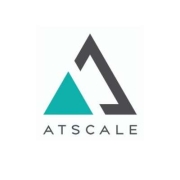Data Virtualization enables organizations to access, manage, and analyze data from multiple sources without the need for physical data integration. This technology streamlines data interactions, offering real-time access to valuable information.
Harnessing Data Virtualization allows businesses to simplify processes by seamlessly connecting disparate data sources. This solution presents a cohesive view to users while reducing time to insight and eliminating the complexity of traditional data aggregation methods. This technology transforms how enterprises handle vast amounts of data, ensuring seamless access and manipulation for informed decision-making.
What are the critical features of Data Virtualization?Various industries, including finance and healthcare, implement Data Virtualization to enhance their data strategies. In finance, it provides real-time transaction data analysis, while in healthcare, it integrates patient records from multiple systems for comprehensive insights.
Using Data Virtualization is beneficial for organizations seeking to fully maximize their data assets without the hassle of traditional ETL processes. It empowers enterprises to respond quickly to market changes and customer needs by providing a dynamic and adaptable data management environment.
| Product | Market Share (%) |
|---|---|
| Denodo | 26.5% |
| TIBCO Data Virtualization | 18.1% |
| IBM Cloud Pak for Data | 14.4% |
| Other | 41.0% |


















Data is generally transferred in different formats and methods and at speeds. Data virtualization allows for the collection, searching, and integration of data from various sources, so that users are able to integrate all the materials into one single model. Since the data is left at the source and accessed virtually rather than being transferred, this helps mitigate security challenges as well as saving money.
Datacenter virtualization is the process of transforming physical data centers hosted on servers into virtual data centers that use cloud computing technology.
In the past, organizations had to use data, file, and email servers in order to keep up with data processing and storage demands. This led to excessive operating costs and inefficiencies. By virtualizing data centers, multiple applications and operating systems can be run on a single server in the cloud, which greatly improves efficiency, allowing organizations to handle their entire IT framework collectively, often from a single central interface.
Datacenter virtualization used to be used as a tool for developing and testing server environments. Today it enables the delivery of huge amounts of diverse information to users when and as they need it.
Datacenter virtualization generally uses cloud computing technology along with virtualization software to replace equipment, such as traditional servers, that would be traditionally housed in a physical data center.
The benefits of data center virtualization include:
1. Reduction of operating costs - Hardware can be one of the most expensive assets for an IT budget. When you virtualize a data center, you cut capital expenses by saving on buying and maintaining equipment. It also gives you more flexibility within your budget in terms of spending on operating costs and maintenance.
2. Improvement of application performance, including agility, flexibility, performance, and responsiveness, and alleviation of bottlenecks.
3. Minimization/elimination of downtime - Downtime can cost $100,000 or more per hour. The two keys to preventing downtime are:
a. A business continuity plan geared toward minimizing business disruptions. When data centers are virtualized, you don’t need to worry about server hardware failure, which causes a major business disruption. Instead, your IT team can perform upgrades and server maintenance without scheduling in any downtime. In addition, overloaded virtual machines can be migrated across several servers in order to better balance workloads and reduce disruptions
b. A disaster recovery strategy designed to reinstate your company’s operations in the event of data loss from a fire, a flood, a virus, an employee mistake, or a server failure. A virtualized data center is easier to back up than physical hardware servers, and will allow you to get up and running again more quickly.
4. Lowering of heat buildup - Using less physical hardware means less heat production, which prevents equipment failure and shutdown and keeps your data safe.
5. Savings of staff resources and time, allowing your employees to focus on other important IT and business issues.
Data center consolidation encompasses strategies and technologies that enable IT architectures to be more efficient. This can be done by consolidating several data centers into one or by making one specific data center run more efficiently on fewer resources. Data center virtualization can assist in this process by increasing IT flexibility, scalability, and agility while at the same time saving a significant amount of money. When data centers are virtualized, workloads can be deployed faster, performance increases, and operations can become automated, which results in IT that is easier to manage and costs less to operate.
Data Virtualization allows you to access and analyze data from multiple sources without the need for physical replication. This capability significantly enhances real-time analytics by providing immediate access to updated data across different systems. It minimizes latency, enabling quicker decision-making processes. This is particularly beneficial for industries that rely on up-to-the-minute information, such as finance and e-commerce. With Data Virtualization, you get a unified view of your data landscape, improving insights and operational efficiency.
Can Data Virtualization reduce ETL workloads?Data Virtualization can significantly reduce ETL workload by allowing you to access and integrate data on demand from disparate sources without moving it. Traditional ETL processes require data extraction, transformation, and loading, which can be time-consuming and resource-intensive. By using Data Virtualization, you eliminate the need for extensive data movement, leading to faster data integration and lower processing costs. This approach streamlines access to data and optimizes infrastructure usage.
What are the security implications of Data Virtualization?When implementing Data Virtualization, security remains a top priority. Data Virtualization platforms often include robust security features such as role-based access control, data masking, and encryption. These measures ensure that sensitive data is protected while maintaining compliance with regulatory requirements. You can enforce access policies centrally without duplicating security operations for each data source, providing both flexibility and control. It's crucial to assess the security framework of your Data Virtualization solution to safeguard against potential data breaches.
How can Data Virtualization improve data governance?Data Virtualization enhances data governance by providing consistent data definitions and centralized access control across your organization. It ensures that data is accessed and managed according to established policies and standards, reducing discrepancies and redundancies. With a virtualized data layer, you can create a single point of governance, making it easier to audit and manage data compliance. This approach supports better data quality and more efficient data management, reinforcing trust in your data assets.
Is Data Virtualization suitable for cloud integration?Data Virtualization is an excellent solution for cloud integration as it allows seamless access to data whether it resides on-premises, in the cloud, or in hybrid environments. It provides a unified data access layer that aggregates data across all locations without the need for data duplication. This capability simplifies and accelerates the integration of cloud-based data sources with existing systems, facilitating smoother transitions and maximizing the benefits of cloud computing. You gain the flexibility to integrate new and legacy systems more effectively, enhancing operational agility.